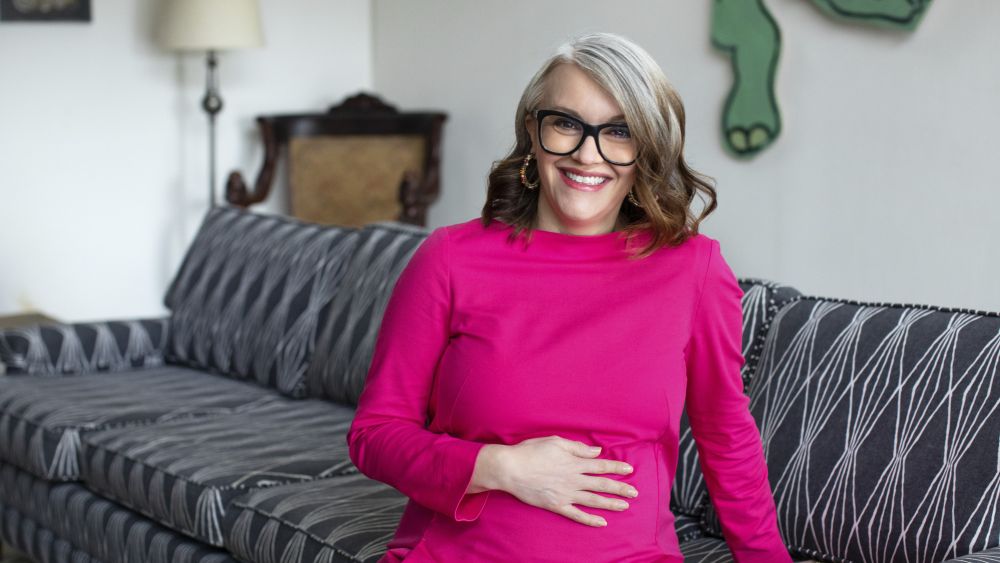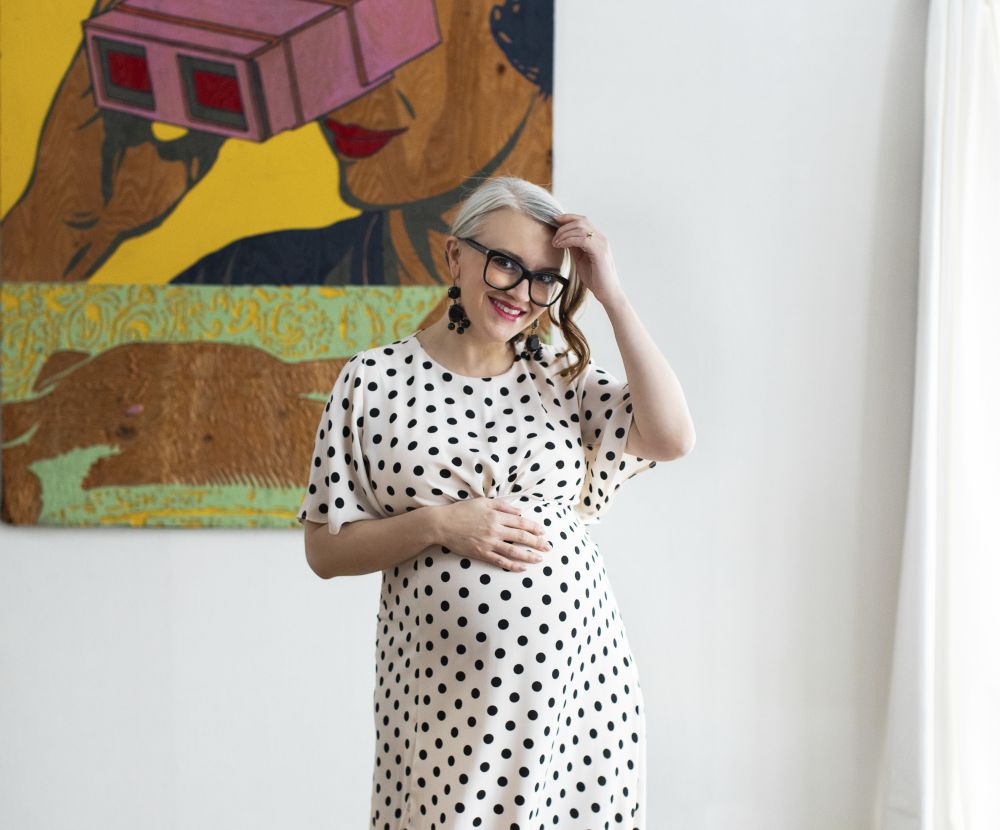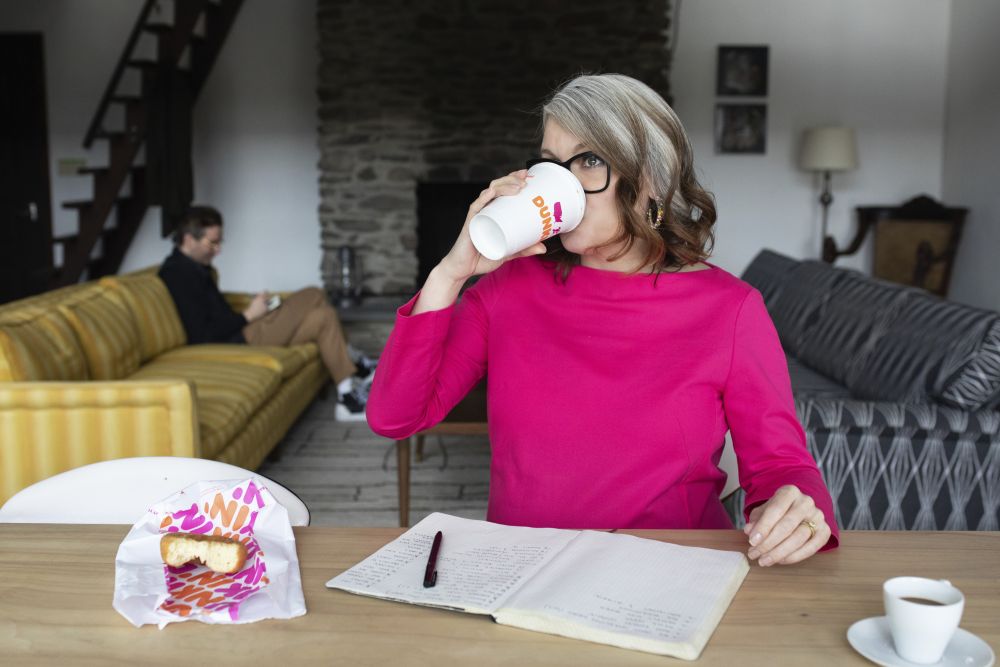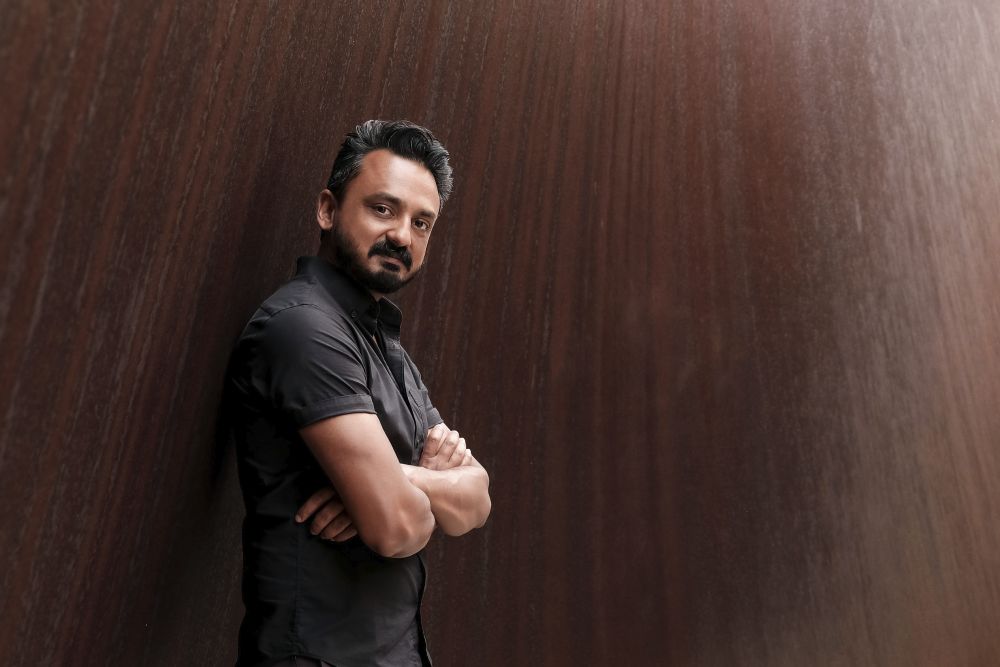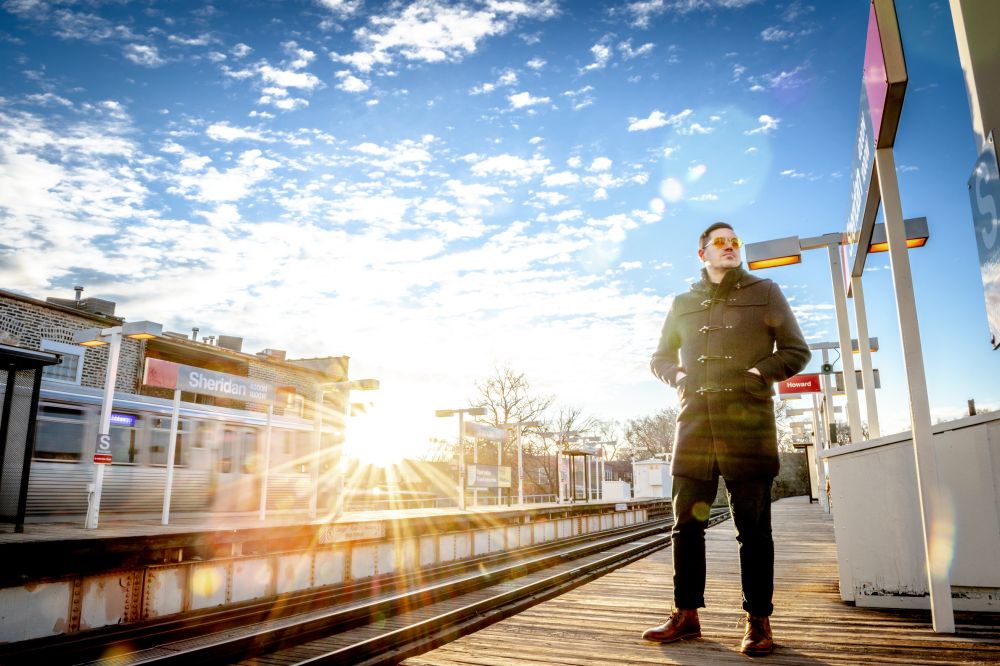Industrial engineer Brandy Houston is on a mission
to improve people's lives
Michael McManus
March 29, 2021
Social Sharing
Sitting on a birth ball, 32 weeks pregnant, Brandy Houston’s grinning face appears on camera. A self-identifying geek, she looks, well, glamorously geeky with oversized black glasses and a streak of white running through her dark brown hair.
Almost immediately she gives me a tour of her stylish Brooklyn apartment. She introduces me to her architect husband, Mike, and shows me her favorite piece of furniture—a Danish mid-century bar she picked up from a warehouse in Jersey City. One of the drawers is filled with all the red wine she dreams of drinking again one day in the future.
Talking with Brandy is like talking to a friend, which, in this case, is true as Brandy and I have worked together off-and-on for the better part of the last decade. We’re both Nebraska natives and New York transplants. I’ve learned she has an unquenchable hunger for data. She’s a systems thinker to her core. Celine Dion is her fashion icon.
An industrial engineer, Brandy is the co-leader of Blue Cottage of CannonDesign’s strategy group. Those titles don’t matter much to her, though. She describes her role more simply.
“I’m driven to solve wicked problems. I’m a problem solver to a fault at times, but as long as a challenge presents an opportunity to have a positive impact on someone’s life, I’m all in," she says.
Brandy grew up 10 miles outside of Tekamah, Nebraska—population 1,200. You’re likely familiar with the town because of Hoot Gibson, rodeo champion and early cowboy film actor (or maybe you’re not familiar). She grew up in a family of farmers and hunters, and, as most farm kids do, she started driving when she was 10. She graduated with a whopping 45 classmates.
Her interest in engineering—and her “geekery,” as she describes it—started in high school physics class. She recalls a specific day when she was the only girl in class with four boys. The teacher asked the boys to get out the voltmeters and ammeters, and asked Brandy to work on her end-of-chapter questions. That didn’t sit well. Brandy made it her mission to read a resistor better and faster than anyone in the room. She was going to be the best at it. It’s when she decided she was going to be an engineer.
While most engineers often follow a linear career path, Brandy’s path was a bit more … eccentric. Maybe that’s not the right choice of word, but it’s not easy describing a jump from refurbishing old freight cars for the Union Pacific Railroad to leading strategic initiatives for prestige beauty with The Estée Lauder Companies. In between, she worked as a Six Sigma Black Belt (i.e., a person who karate chops non-value added steps out of a process and optimizes complex systems) and a Manager of Perioperative Services at Nebraska Medicine. She later became the director of operations design for a global healthcare design firm.
Healthcare has her heart, largely because she’s spent a fair amount of time in hospitals. Her dad and grandfather have had roughly 10 heart surgeries between the two of them in a span of several years. She shared a story about her father going in for an angioplasty—a procedure that should take about 30 minutes—and how her family waited nervously for hours for an update. “The surgery went fine, but nobody thought to update us,” she said. “It turns out they just didn’t have a bed for him, so he was hanging out in the hallway joking around with the staff.” She has many stories like this. Brandy calls them reconnaissance missions.
A more recent “mission” involved her own stay in a hospital. While she was training for a half marathon, one of her discs popped out of her spine and severed some nerves. She had to have spine surgery. Two weeks later, her body had a unique reaction that caused blood clots in both her legs and lungs.
“I got to see, very personally, the sequence of events that have to unfold to receive care in New York City,” she said. “I had to take an Uber to the emergency department because it was faster than waiting for an ambulance. I had to stay for three days in the ED because there weren’t any available beds in the patient tower. They forgot to feed us, so my husband and I ended up ordering our meals from Seamless.”
Brandy journey-mapped all of this, of course, and the result amazed her. The sheer quantity of people, equipment and systems that needed to come together for her journey to work was eye-opening. It’s the ultimate systems-thinking challenge. “In no way can we help patients achieve health and wellness by only thinking within the walls of a healthcare environment,” Brandy added. “We have to connect the dots in the community and in people’s lives. Everything plays a role.”
At the time of this experience, Brandy was working at The Estée Lauder Companies, but she was hellbent on shifting her career back to healthcare to solve issues like this.
“A friend of mine [Abbie Clary] called me one day and told me I had to meet Juliet Rogers [the president of Blue Cottage of CannonDesign],” she recalled. “I met up with Abbie and Juliet in the city and we talked for hours about how we want to transform healthcare and have a real impact on people’s lives. The conversation wasn’t about the company or the role I might play—it was just three kindred souls talking about real impact, real transformation. I was sold.”
While Brandy mainly partners with healthcare and commercial organizations across the country, she’s not specific to an industry or sector. She just solves problems, wherever they exist. The only requirement is that there must be an opportunity to help society and improve life. If a solution can do that, it’s the right problem for her.
“That’s why I love industrial engineering,” she said. “It’s very malleable and there are literally hundreds of ways it can be applied. It’s just a problem-solving umbrella using data-driven and qualitative input and then optimizing the problem or opportunity. It’s strategic and tactical at the same time.”
Finding patterns in chaos is Brandy’s fuel. If she’s sitting in front of a monitor looking at a large, messy dataset (the bigger the better, of course), it’s important to check on her from time to time just to make sure she’s still breathing. I remember hearing a story once about how she was in front of a client furiously whiteboarding, completely mesmerized by the data. After a few minutes she turned around and jumped in surprise as she realized there were still other people in the room with her. She was in a data-driven zone.
Brandy’s far from only a heads-down analyst (though she loves that side of her, preferably with Childish Gambino, TV on the Radio or Edith Piaf blasting in her ears). She has the rare ability to walk wildly smart C-suite leaders through complicated networks of information while getting them to participate in imagining what’s possible through ideation, roadmaps and the actual realization of results. Empathy, authenticity and obsessive listening are key to doing this, she says, as is the ability to develop actionable insights.
“You can’t solve problems like this unless you genuinely give a damn,” she said. “You have to really immerse yourself in the issue—and I mean really—so you can attempt to understand the impact it’s having on people or that people have on it, and how best to create a compelling story that helps to facilitate understanding for everyone. You also have to have the ability to translate your analysis and discovery outputs into actionable human-centered and business-driven insights. Uncovering big ideas is great, but we have to be able to translate the idea into a feasible solution that can make a real impact.”
“If you could solve any problem, what would it be?,” I asked Brandy.
I was a bit surprised when she brought the discussion back to Tekamah, Nebraska. She shared that her father has macular degeneration, an eye disease that often leads to vision loss. When someone loses the ability to be self-sufficient in a rural community, they aren’t left with many options. “In large cities you can remain fairly independent because of all the services that are available like Uber and Grubhub, but there isn’t much incentive for these businesses in small towns,” she said. “I want to figure out how people like my dad can live long, fulfilled lives in rural communities and have access to the resources necessary to thrive—to be brilliantly independent with a network that works for them.”
The broad strokes of Brandy’s life read sort of like a movie plot: Small town farm girl moves to New York City to make a difference in the world. And, while you might assume her relentless drive to solve incredible challenges would put her head in the clouds, she’s incredibly grounded. In fact, her niceness and relatability—as well as her hearty, infectious laugh—are as pronounced and extreme as her drive.
My interview with Brandy solidified what I’ve long known. She’s gutsy, wickedly smart, Nebraska nice and New York fierce. She’s the type of person who can really change the world.
